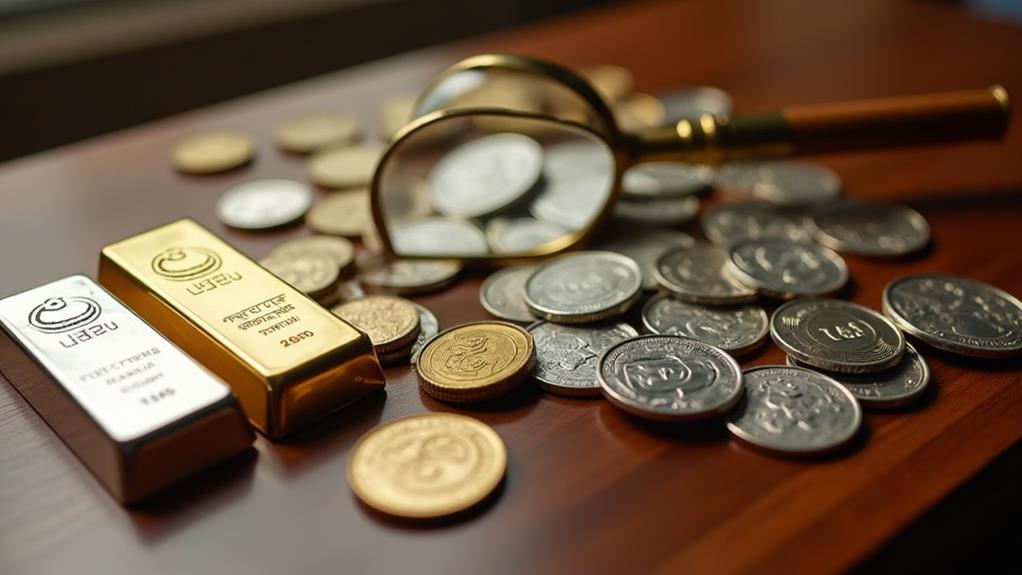Peter Schiff, a renowned economist and financial commentator, has long been an advocate for gold investment as a safeguard against economic uncertainty. His five crucial tips for investing in gold have gained significant attention in financial circles, offering a strategic approach to exploring the precious metals market. While some investors may view gold as a outdated or risky asset, Schiff's advice provides a compelling argument for its enduring value. By examining these principles, investors can gain valuable insights into the potential benefits and pitfalls of gold investment, potentially reshaping their approach to portfolio diversification and wealth preservation.
Key Insights
- Focus on physical gold ownership rather than paper gold for true asset protection.
- View gold as long-term wealth preservation, not short-term speculation.
- Diversify within precious metals, including silver and mining stocks.
- Consider gold as a hedge against currency devaluation and inflation.
- Time purchases based on global economic indicators and geopolitical events.
Understand Gold's Intrinsic Value

Gold consistently maintains its fundamental value due to its unique properties and historical significance. As Peter Schiff emphasizes, understanding gold's inherent value is vital for successful investment.
Gold serves as an inflation hedge and a store of value during economic recessions and currency devaluations. Unlike fiat currencies, gold's scarcity and durability contribute to its long-term stability.
Key factors influencing gold's inherent value:
- Limited supply and difficulty of extraction
- Industrial and technological applications
- Cultural and historical importance
Gold market trends often reflect global economic conditions, making it a key component of a diversification strategy.
Investors should consider physical gold storage options to maximize security. As Schiff notes, "Gold's value is not determined by governments or central banks, but by the free market."
Understanding these fundamentals helps investors make informed decisions in the precious metals market.
Timing Your Gold Purchases
Understanding gold's intrinsic value lays the foundation for successful investment, but knowing when to enter the market is equally important. Timing your gold purchases requires careful consideration of various factors, including gold price forecasts, market news, and economic uncertainty.
Investment strategies often involve diversification, with gold bullion, bars, and coins serving as potential options.
Peter Schiff, a renowned economist, advises:
- Monitor global economic indicators
- Watch for signs of inflation or currency devaluation
- Consider geopolitical events that may impact gold prices
It's essential to keep in mind that gold prices can be volatile in the short term. Investors should focus on long-term trends rather than attempting to time the market perfectly.
Regular, small purchases over time (dollar-cost averaging) can help mitigate the risks associated with market fluctuations and provide a more stable approach to building a gold portfolio.
Diversify Within Precious Metals

While gold often takes center stage in precious metals investing, a well-rounded portfolio should include other metals as well. Diversifying within precious metals can help mitigate investment risks and potentially increase returns.
Consider incorporating:
- Physical gold bullion
- Silver coins or bars
- Gold mining stocks
- Gold ETFs
- Platinum or palladium investments
Gold investment advice often emphasizes the importance of balance. By spreading investments across various precious metals, investors can protect against market fluctuations specific to one metal.
For example, while physical gold offers stability, silver may provide more growth potential. Gold mining stocks can offer exposure to the industry without directly owning bullion, while ETFs provide liquidity.
Nevertheless, each option carries its own risks and benefits. Investors should carefully research and consider their portfolio goals before allocating funds to different precious metals.
Physical Gold Vs. Paper Gold
When pondering gold investments, investors often face a fundamental choice: physical gold or paper gold. This decision can significantly impact one's investment strategy and potential returns. Peter Schiff, renowned for his gold investment advice, emphasizes the importance of understanding the distinctions between these options.
| Type | Advantages | Disadvantages |
|---|---|---|
| Physical Gold | Tangible asset, no counterparty risk | Storage and insurance costs |
| Paper Gold | Easily traded, lower fees | Counterparty risk, no physical possession |
| Gold IRA | Tax benefits, diversification | Stringent regulations, custodial fees |
Physical gold, such as coins and bars, offers direct ownership of the precious metal. Paper gold, including ETFs and futures contracts, provides exposure to gold prices without physical possession. Gold IRAs combine elements of both, allowing investors to hold physical gold within a retirement account. Each option carries distinct investment risks and potential for capital appreciation. Schiffgold advises evaluating factors such as storage, liquidity, and long-term goals when choosing between physical gold and paper gold investments.
Long-Term Perspective on Gold

Although short-term fluctuations in gold prices can be unpredictable, adopting a long-term perspective on gold investments often proves advantageous. Gold's historical performance as a safe-haven asset during economic uncertainties and its potential to hedge against inflation make it an attractive long-term investment option.
When reflecting on gold as a long-term investment, investors should:
- Understand gold's role in portfolio diversification
- Research the impact of central bank policies on gold prices
- Monitor global economic trends affecting gold supply and demand
- Think about gold's relationship with currency fluctuations, especially the US dollar
- Evaluate the potential effects of changing monetary policies on gold values
While gold can offer stability and potential growth over time, it's essential to keep in mind that all investments carry risks.
Investors should carefully assess their financial goals, risk tolerance, and overall investment strategy before allocating funds to precious metals like gold.
My Final Thoughts
Peter Schiff's gold investment advice provides a roadmap for navigating the precious metals market. Like a lighthouse guiding ships through treacherous waters, these tips illuminate the path to financial security amid economic uncertainty. Understanding gold's inherent value, timing purchases strategically, exploring within precious metals, choosing physical gold, and maintaining a long-term perspective are essential steps. By adhering to these principles, investors can better position themselves to weather economic storms and protect their wealth against inflation and market volatility.







